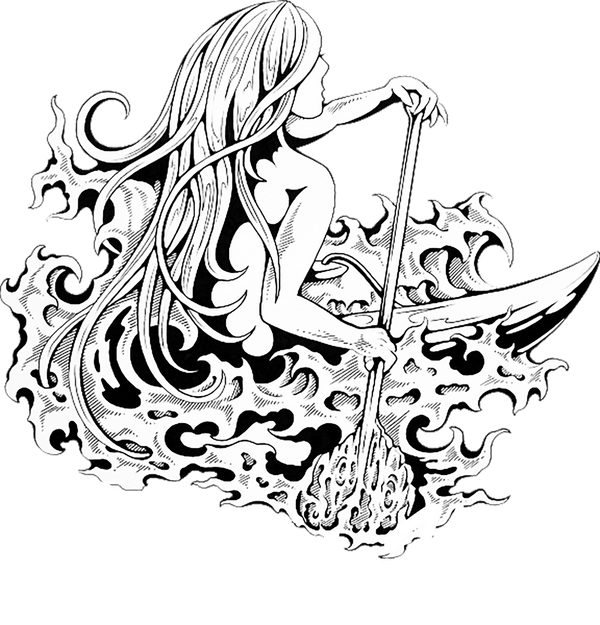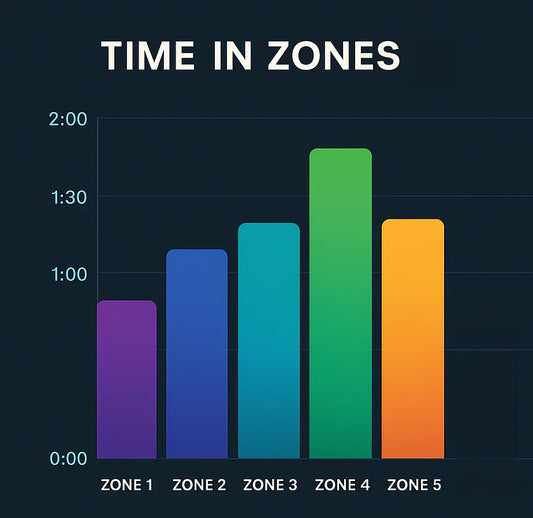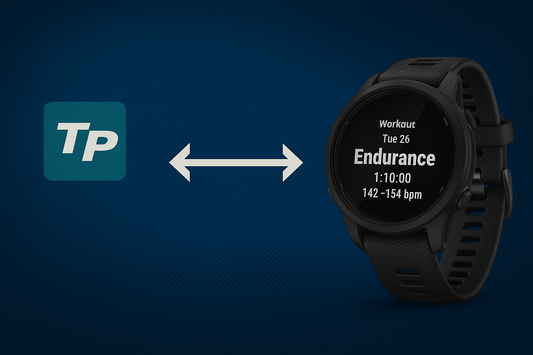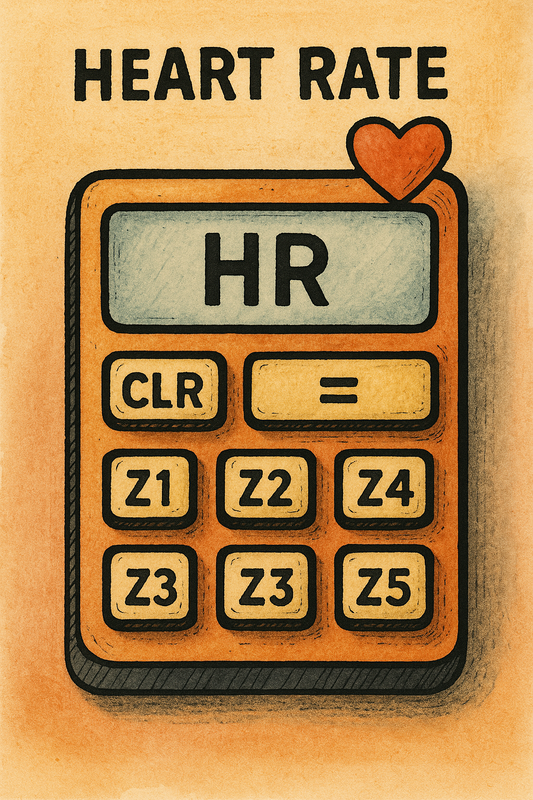Building Your Aerobic Engine for Paddling
Zone 2 training has become a buzzword across endurance sports, and for good reason. Whether you’re an outrigger canoe paddler, cyclist, or runner, time in Zone 2 is the foundation of building lasting endurance, efficiency, and speed. But what exactly is Zone 2? How do you know if you’re truly in it? And how can you track progress over time? Let’s break it down.
What Exactly is Zone 2?
Zone 2 is often described as “easy aerobic training,” but that undersells its importance. It’s the intensity range where your body is working hard enough to stimulate adaptation, but not so hard that you accumulate fatigue too quickly.
Physiologically, Zone 2 sits below your first lactate threshold (LT1) or ventilatory threshold 1 (VT1)—the point where your body begins to increase lactate production and breathing becomes noticeably heavier. In this zone, you’re primarily burning fat as fuel and maintaining a steady, sustainable effort.
In practical terms:
- Breathing: Conversational—you can talk in full sentences without gasping.
- Perceived Effort: 3–4 out of 10 on the RPE (rate of perceived exertion) scale.
- Duration: You should be able to hold Zone 2 for 4–8 hours without breaking down.
Think of Zone 2 as the foundation zone: the place where you build endurance, teach your body to burn fuel efficiently, and practice smooth technique. Just as a canoe needs a stable hull before it can carry speed, your body needs a strong Zone 2 base before it can handle the stress of higher-intensity training.
Why Does It Matter if You’re Burning Fat or Carbs?
One of the biggest benefits of Zone 2 training is improving your ability to burn fat for fuel. But why does this matter for a paddler?
Your body has two main energy sources:
- Carbohydrates (glycogen): High-octane fuel stored in your muscles and liver. Powerful, but limited—you only have enough for 90–120 minutes of hard effort before stores run low.
- Fat: A nearly unlimited supply, even in lean athletes, but slower to burn.
At higher intensities, your body leans heavily on glycogen. Once those stores run out, you “bonk”—pace plummets, strokes feel heavy, and your ability to push hard disappears. Zone 2 training teaches your body to use more fat at a given effort, saving glycogen for when you need it most.
For paddlers, this means:
- In long-distance races, you can paddle strong for hours without crashing.
- You’ll have glycogen reserves available for surges, like catching bumps or sprinting to the finish.
- Training feels more sustainable, with less day-to-day fatigue.
Think of fat metabolism as shifting from burning through a small gas tank (carbs) to tapping into a massive reserve tank (fat). Zone 2 training makes the transition smoother and keeps your engine running longer.
Finding Your Zone 2: Joe Friel’s Heart Rate Zones
One of the most practical ways to define Zone 2 is using Joe Friel’s heart rate (HR) system. Friel organizes training into zones based on lactate threshold heart rate (LTHR). To find your LTHR, a field test is often used:
- Warm up thoroughly for 10–15 minutes.
- Perform a 60-minute time-trial effort, going as hard as you can sustain.
- Record your average heart rate from the 60-minute effort—this is your LTHR.
From there, use Friel’s Zone 2 range: 78–86% of your LTHR. For example:
- LTHR: 170 bpm
- Zone 2: 129–146 bpm
This becomes the range where you should target most of your base training.
Why Use Joe Friel’s Zones for Paddling?
Paddling doesn’t have a universally adopted heart rate zone system the way running or cycling does. Joe Friel’s model, originally designed for cycling, has become popular across endurance sports because:
- It’s based on lactate threshold, not max heart rate. Threshold is a more reliable anchor point since max HR varies widely between individuals and isn’t strongly tied to fitness.
- The demands of paddling mirror cycling more than running. Both are seated, full-body endurance sports where effort is driven by muscular endurance and steady-state output rather than impact stress.
- It scales across disciplines. Paddlers who cross-train on bikes, ergs, or running can use one consistent framework to monitor effort.
In short: while paddling is unique, Friel’s cycling zones provide a practical, physiologically sound system to structure training intensity on the water.
Finding Your Zone 2: The Talk Test
Using Joe Friel’s zone system to define Zone 2 is a simple way and a good starting point, but Zone 2 can be highly individualized. The only definitive way to set your zones is laboratory testing—but not all of us are willing to do that. Enter the “talk test.” The talk test isn’t just a coaching trick—it’s been validated in multiple studies as a reliable way to gauge aerobic exercise intensity. Research shows that the point where speech becomes difficult corresponds closely to the ventilatory threshold, which aligns well with the upper end of Zone 2 / lower end of Zone 3. That means the talk test is a practical way to define Zone 2, even without a heart rate monitor.
Why it matters: Zone 2 is highly individual. Two paddlers may have the same threshold heart rate but very different thresholds overall, meaning one-size-fits-all formulas (like 86% of LTHR) often miss the mark. The talk test adjusts for this because it’s based on your own breathing and speech rhythm, not a generic calculation.
How to Use It
- While paddling, try speaking in complete sentences.
- If you can get through a phrase like “I’m feeling strong today, and this pace feels sustainable” without pausing for a breath, you’re likely in Zone 2.
- If you break into short phrases or need to inhale mid-sentence, you’ve drifted too high.
A Simple Field Protocol for Paddlers
- Warm up for 10–15 minutes at an easy pace.
- Settle into a steady effort where you think you’re in Zone 2.
- Every 5–10 minutes, perform a “talk test check” by speaking a sentence out loud.
- If you can say it comfortably, you’re in the right place.
- If not, ease off slightly until you can.
- Continue for 30–60 minutes at this effort, letting your breathing and speech ability guide your pacing.
Over repeated sessions, you’ll get a clearer feel for what true Zone 2 effort feels like in your body—which is far more valuable than any formula.
Physiological Adaptations in Zone 2
Spending consistent time in Zone 2 builds the aerobic engine—the system that powers long-distance paddling. While the effort feels manageable, the long-term adaptations are profound. Here’s what’s happening under the hood and how it translates to the canoe:
-
Mitochondrial Density
Zone 2 training increases both the number and size of mitochondria (the cell’s power plants). More mitochondria means you can produce more energy aerobically, which delays fatigue and boosts sustainable pace.- On the water: You can hold a strong training or race pace without fading partway through.
-
Fat Utilization (Metabolic Flexibility)
Training in this zone enhances your ability to oxidize fat at higher intensities. That means you spare glycogen (stored carbohydrate), which is limited, and rely more on fat, which is abundant.- On the water: You’ll last longer in long-distance races without “bonking,” and your sprint finish will still be there at the end.
-
Capillary Growth
Zone 2 promotes angiogenesis—the creation of new capillaries in working muscles. This improves oxygen delivery and waste product removal. Think of it as upgrading your muscle’s highway system: more lanes, less traffic.- On the water: Your muscles feel fresher during long paddles, and recovery between harder intervals improves.
-
Cardiac Remodeling
At low intensity, the heart adapts by enlarging the left ventricle chamber, allowing it to pump a greater volume of blood per beat (stroke volume). This lowers resting heart rate and makes each stroke of the paddle less costly in terms of effort.- On the water: Each pull feels easier, and you can sustain higher speeds with less perceived exertion.
-
Improved Lactate Clearance
Training in Zone 2 upregulates enzymes that help your body clear lactate more efficiently. This doesn’t just reduce fatigue—it also raises the ceiling for higher-intensity paddling later in your training cycle.- On the water: You can transition into race-pace efforts with less burning in your arms and legs, and recover more quickly between sets.
-
Stroke Efficiency and Neuromuscular Adaptation
Because Zone 2 doesn’t overload your system, it provides the perfect environment for efficient technique. Every paddle stroke reinforces proper neuromuscular firing patterns without the breakdown caused by harder efforts.- On the water: Your technique holds up late in races, giving you an edge over paddlers who lose form under fatigue.

Technique Work in Zone 2
One of the overlooked benefits of Zone 2 training is that it’s the perfect environment for technical refinement. At higher intensities, form often falls apart as fatigue sets in. In Zone 2, you have the mental and physical bandwidth to:
- Reinforce proper catch mechanics.
- Dial in body rotation and leg drive.
- Refine stroke timing and paddle angles.
The low intensity makes every repetition a chance to engrain efficient movement patterns that will hold up when the effort increases.
Tracking Progress: Aerobic Decoupling Analysis
How do you know if your Zone 2 training is paying off? One powerful tool is aerobic decoupling, which measures the relationship between heart rate and pace over a steady effort.

In plain terms, it compares how much your heart rate drifts upward relative to your pace (or power) in the second half of a workout compared to the first. TrainingPeaks has this as a standard metric, so if you don't want to do the math yourself, we highly recommend using TrainingPeaks.
Steps for Paddlers:
- Choose a steady Zone 2 paddle of 60–90 minutes.
- Make sure the course is consistent—ideally not an out-and-back. Instead, find a course where you can do two laps so the first and second halves share the same conditions (current, tide, wind). This ensures the test reflects your physiology, not the environment.
- Track heart rate and pace (or GPS speed).
- Split the session into two halves and calculate the HR-to-pace ratio for each, or let TrainingPeaks calculate it for you.

Benchmarks:
- <5% decoupling: Strong aerobic fitness.
- 5–7% decoupling: Developing aerobic base.
- >7% decoupling: Aerobic system not yet resilient—keep building Zone 2 volume.
In the example above, aerobic decoupling was 12%, so heart rate needs to be brought down further to stay in Zone 2. Over time, you should see decoupling decrease—meaning your body is sustaining the same pace at the same heart rate with less drift. Eventually you can see your heart rate hold speeds at higher and higher efforts as you push your Zone 2 higher on your heart rate scale.
If we target the correct Zone 2 HR we will see a steady pace workout with no decoupling:

If we set our zone 2 too high we will see that if we hold our HR steady our speed will begin to taper. This is because you are not really in zone 2. You are in zone 3 and depleting your glycogen, thus bonking. Where fat is hypothetically unlimited as a fuel source, so the bonk wouldn't be as significant.

Final Thoughts
Zone 2 training is not “junk miles”—it’s the cornerstone of long-term endurance and efficiency. By combining Joe Friel’s HR zones or the talk test to find your sweet spot, layering in technical focus during sessions, and tracking aerobic decoupling to monitor progress, paddlers can steadily expand their aerobic engine.
It may not feel flashy in the moment, but consistent Zone 2 work is the foundation that makes higher-intensity training—and ultimately race performance—possible.
Want More
If you want to dive deep into the science, check out Kwon, Y., et al. (2023). The talk test as a useful tool to monitor aerobic exercise intensity — https://pmc.ncbi.nlm.nih.gov/articles/PMC10331140/









